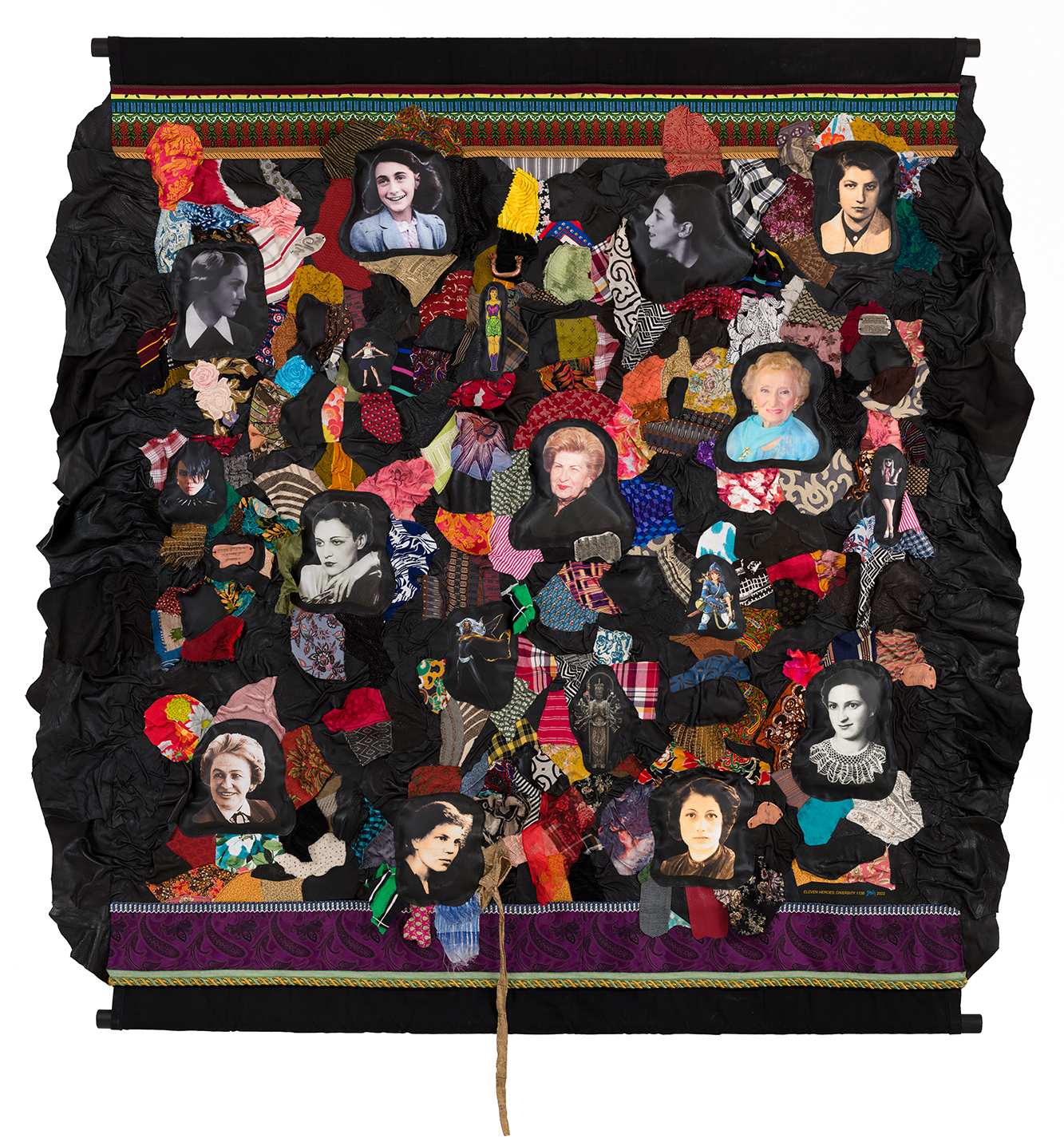Click on the face of each hero to learn more.

Hannah Senesh

(1921–1944)
Born: Hungary
During the Holocaust: Palestine, Egypt, Yugoslavia, Hungary, Budapest
As one of 37 Jews from Mandatory Palestine parachuted by the British Army into Yugoslavia during the Second World War, Senesh assisted in the rescue of Hungarian Jews about to be deported to the German death camp at Auschwitz. She was apprehended and killed by the Nazis.
Anne Frank

(1929–1945)
Born: Germany
During the Holocaust: Holland
A diarist and writer, Frank is one of the most discussed Jewish victims of the Holocaust. Her wartime diary The Diary of a Young Girl has been the basis for several plays and films. She represents the many brave girls during this period and exemplifies the loss and legacy of the 1.5 million Jewish children murdered during the Shoah.
Sitti Israel

(née Scheuer; name mistaken by Nazis for Lidi Sara), (1908–2001)
Born: Germany
During the Holocaust: Luxembourg
In 1940, a woman of means, living with her family in Luxembourg, had the foresight, bravery and wherewithal to insist upon fleeing Nazi persecution despite her husband and others trying to discourage her from leaving. This aspect of female heroism is seldom told.
Zivia Lubetkin

(1914–1976)
Born: Poland
During the Holocaust: Poland
One of the leaders of the Jewish underground in Nazi-occupied Warsaw, Lubetkin was the only woman in the High Command of the resistance group Zydowska Organizacja Bojowa (ZOB) and testified as a witness at the Eichman Trial in Jerusalem in 1961.
Nancy Wake

(1912–2011)
Born: New Zealand; lived in Australia
During the Holocaust: France
Serving as a British agent during the latter part of World War II, Wake became a leading figure in the maquis groups of the French Resistance and was one of the Allies’ most decorated servicewomen of the war. After the fall of France in 1940, she became a courier for the French Resistance and later joined an escape network.
Hadassah Bimko Rosensaft

(1912–1997)
Born: Poland
During the Holocaust: Poland and Germany
Because of her medical training, she was assigned to work in what was called the Jewish infirmary at Auschwitz where she saved hundreds of Jewish women from the gas chambers. After liberation, she headed the Medical Department of the Bergen-Belsen Displaced Persons Camp, where she helped rehabilitate thousands of Jewish survivors.
Ruth Gruber

(1911–2016)
Born: USA
As an American journalist, photographer, writer, humanitarian and a former United States government official, she traveled throughout post-liberation Europe to help, write about and photograph Holocaust survivor refugees.
Nadezhda Popova

(1921–2013)
Born: Soviet Union
During the Holocaust: Soviet Union
As one of the first military female pilots in the Soviet Union, Popova was highly decorated with awards including the title “Hero of the Soviet Union,” the Gold Star Medal, the Order of Lenin and three Orders of the Red Star.
Gertrud Luckner

(1900–1995)
Born: England
During Holocaust: Germany
Luckner led Freiburg Catholics, with money received from the archbishop, to smuggle Jews over the Swiss border and deliver messages from the beleaguered Jewish community. After the war, Luckner devoted herself to furthering understanding between Jews and Christians.
Noor Inayat Khan

(1914–1944)
Born: Russia
During the Holocaust: Britain, France
As a Special Operations Executive (SOE) agent, Khan became the first female radio operator to be sent from Britain to aid the French resistance.
Vitka Kempner

(1920-2012)
Born: Poland
During the Holocaust: Poland
Kempner was a leader of the United Partisan Organization’s armed resistance in the Vilna ghetto. She fought alongside founder Abba Kovner, whom she later married. Fearless in combat, she was the first woman to play a role in blowing up a Nazi train.
